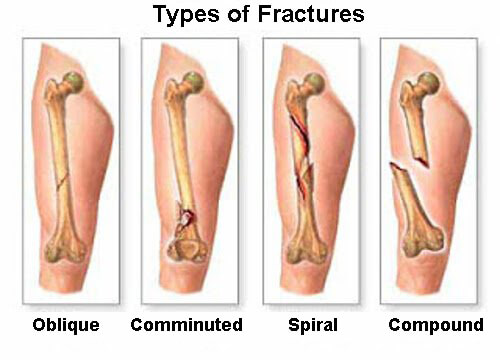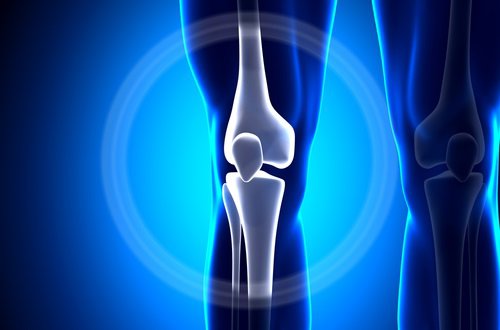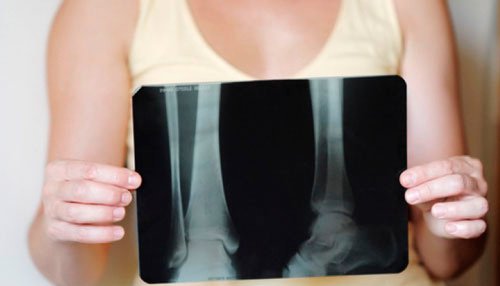5 Primary Bone Cancer Symptoms You Should Know


Written and verified by psychologist Valeria Sabater
Maybe you’ve already heard about this kind of cancer. Most of the time, when we talk about cancer in the bones, it has spread from somewhere else. This is secondary (metastatic) bone cancer. When a tumor spreads, it can attack any part of the bone.
But according to recent medical research, “primary bone cancer” diagnoses are on the rise. This is where the tumor starts in a particular bone, instead of spreading to it.
As long as you pick it up early, the survival is relatively high. That’s why information and prevention are so important. The “good” news is that it’s easier to diagnose this kind of cancer because of a very specific kind of pain. Today, we’re going to talk about other primary bone cancer symptoms, so that you can stay on the lookout.
What is primary bone cancer?

This disease affects the body’s skeletal system. The most commonly affected areas are bones around the knee, femur, and tibia. It has no relationship to secondary bone cancer, which happens from another type of cancer spreading to the bones. There are three types of primary bone cancer.
- Osteosarcoma is the most common. It mostly happens to teenagers in the middle of growing and attacks new bone tissue as it develops.
- Chondrosarcoma usually happens with adults between 40-60 years old. It always starts in the cartilage surrounding the bone.
- Ewing’s sarcoma is also common in younger children because their nervous tissue is undeveloped, which can lead to small sarcomas along the bone marrow. It also has a strong hereditary component. This means that it’s preventable and responds well to radiation-based treatments.
Read more:
Primary bone cancer symptoms

Very localized pain
- There are always days where your knees ache more than usual. It could just be fatigue: the daily wear-and-tear is bothering you, so you take an anti-inflammatory to relieve the pain. But the pain from primary bone cancer is much worse, and more localized.
- Like we said before, pay attention to how your knee joints, tibia, and femur feel. Nearly 70% of chondrosarcoma cases start in these areas.
Hypersensitivity
- Pain in the knees or leg bones can be so severe that even the touch of clothing is too much. It’s an intense pain, like a burning disc, and not even pain medication can help very much.
Sudden inflammation
- When a tumor grows on a bone, it also invades the tissues around the bone itself or the nearby joint. There’s a characteristic thickening in the region that’s a clear sign something’s wrong. It’s more than just inflammation – when you touch it, you’ll notice it’s much denser than the classic swelling caused by something like arthritis.
Fever
- The inflammation and build-up of tissue caused by the tumor’s growth usually come with a fever. The symptoms of chondrosarcoma are very clear. The moment you notice any of the above, you should check with your doctor as soon as possible. That way you can make sure you start treatment as soon as possible if you have it.
- Remember never to self-medicate. It’s important not to mask primary bone cancer symptoms with drugs, because otherwise you might not notice any important changes.
Keep reading:
Possible fractures
- Bone fractures start in the later stages of this cancer, once the tumor has weakened the bone and caused cracks or breaks. Before you get to this point, your body will have already shown symptoms like acute pain, fatigue, inflammation, and fever.
- This is why it’s vital for you to look out for any of these indicators. Primary bone cancer is rare, but the biggest risk is mistaking it for another disorder and not going to the doctor as soon as you notice the symptoms. Pay attention to pain in your knees and always get a proper medical diagnosis to rule out more serious problems.

All cited sources were thoroughly reviewed by our team to ensure their quality, reliability, currency, and validity. The bibliography of this article was considered reliable and of academic or scientific accuracy.
- Cáncer primario de hueso. Instituto Nacional del Cáncer. https://www.cancer.gov/espanol/tipos/hueso/hoja-informativa-hueso
- Cáncer de hueso. Medline Plus. https://medlineplus.gov/spanish/bonecancer.html
- Cáncer de huesos. Mayo Clinic. https://www.mayoclinic.org/es-es/diseases-conditions/bone-cancer/symptoms-causes/syc-20350217
This text is provided for informational purposes only and does not replace consultation with a professional. If in doubt, consult your specialist.








